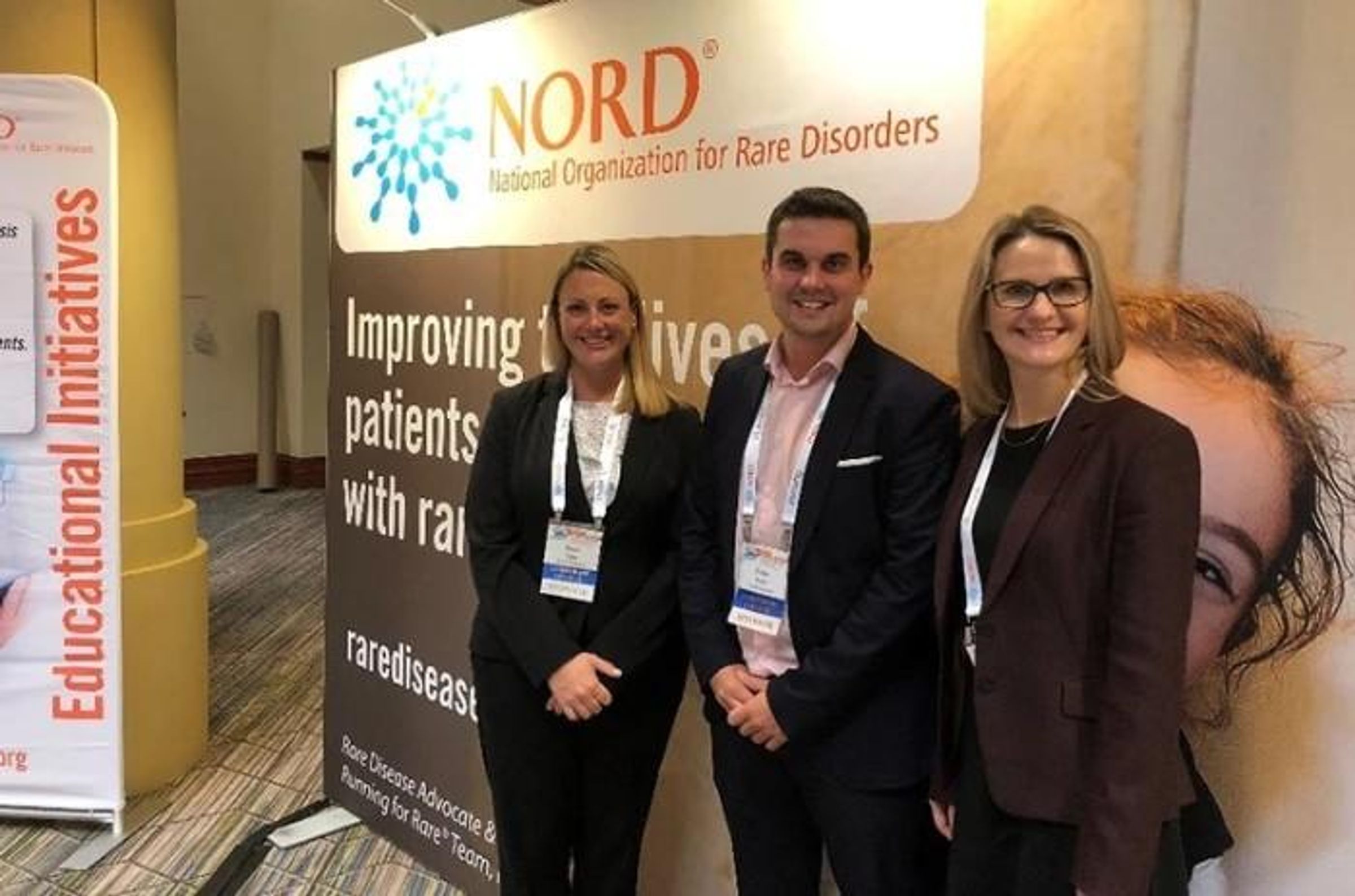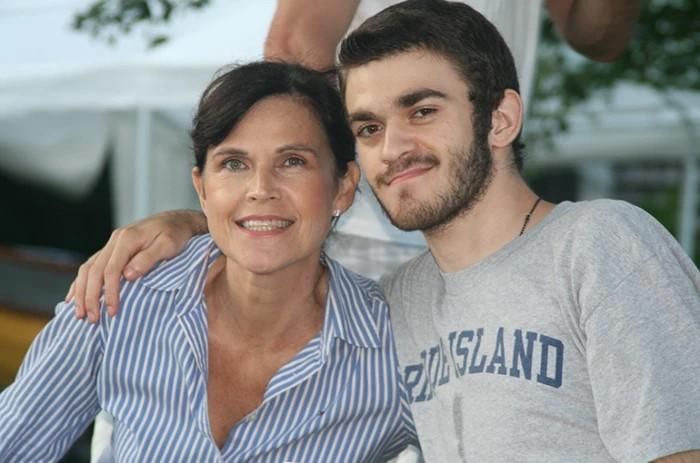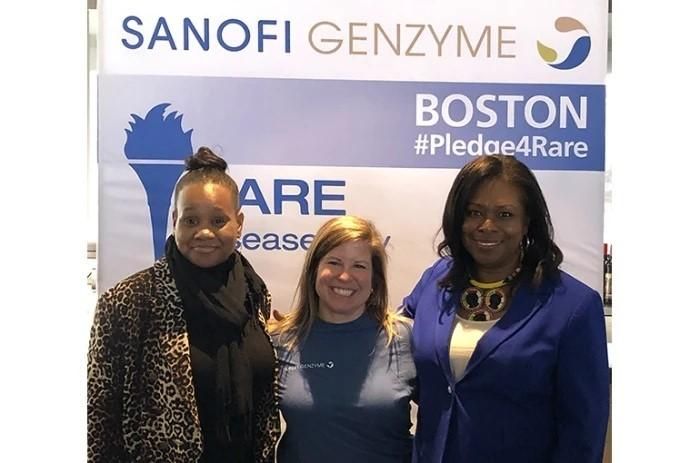We Won’t Give Up: Advocating for the Rare Disease Community

By Kate Tighe, U.S. Public Affairs and Patient Advocacy for Sanofi
At Sanofi, I get to have a career built on networking and being a conduit for the voices of many. In Public Affairs and Patient Advocacy build and share resources, bring visibility to the sometimes invisible and, most importantly, listen and learn from external stakeholders about what patients and their families need and deserve. Recently, I spoke with my Public Affairs and Patient Advocacy colleagues in our Rare Disease and Rare Blood Disorder franchises, Ross Martin, Jane Cavanaugh Smith and Lisa Schmitt, to discuss our path to advocacy and what fuels our passion.
Patient advocacy, as I experience it working in the pharmaceutical industry, is a function tasked with listening, learning, and guiding. We serve as a bridge between a company working on solutions to improve diagnosis and care, and the communities of patients and loved ones waiting for them. My colleague Ross Martin, who brings experience from his time working at National Organization for Rare Diseases (NORD), explained what it feels like to serve as that bridge.
“Being in patient advocacy is about being there for a person or community to the best of your ability. Fighting for them when others might not be and doing the small things to make a big difference for the lives of patients,” notes Ross. “What can be more difficult, but very important, is finding common ground. The process and the outcome allow me to learn about the support and treatment needs of the patient community.”
Among my colleagues, none of us have had the same pathway to our careers, which means we all bring a variety of skills to the work we do. In my case, I got here by accident. I had been working in fundraising and development for a patient advocacy group working on neuromuscular diseases. The organization had provided funding for a new pediatric clinic and I offered to serve as a temporary liaison until a colleague could be named. I never imagined it would be permanent, but the connections I made to the families in that clinic and the challenges they faced trying to navigate insurance, care providers, and any potential clinical trial options really moved me to wonder what it would be like if we could make things easier for families. These were life-changing diagnoses being handed down, and what came next for them was so difficult. It was clear that changes were needed from inside the companies who worked on these rare diseases, and today I get to make those changes possible by working for Sanofi.
For Jane Smith, her passion is deeply personal.
“My career in patient advocacy began 28 years ago when my son was born and diagnosed with severe hemophilia A. My father had hemophilia, so we knew I was an obligate carrier and there was a 50/50 chance our children would inherit the gene, but I didn’t expect it would lead me down a new career path,” states Jane. “I had worked in investments for 10 years before having children, and after my son was born, I took a break to be home with him and our daughter. This break allowed me time to get involved in the local hemophilia community and shaped my professional passion. I served on several local Boards and when I was offered a part time job as Program Director at New England Hemophilia Association, I knew I would never go back to investments. I was an advocate in my personal life and as a career.”

Jane Smith and her son.
Despite our different journey to our roles in advocacy, we all found our way to this team. We all get to work for a company with a deep history in the rare disease space. As a patient advocate, I get to collaborate to ensure Sanofi’s priorities overlap with the rare disease community needs, including equitable access to therapy, shortening the long road to a diagnosis and, of course, the development of new potential therapies and programs to meet the needs of patients and their families.
For me, advocating for equitable access to treatment pushes me to think differently in my daily work. I often ask myself, “What if it was me in this situation? How hard would I fight to get what I needed to live, or to help my loved one?” This perspective pushes us to work on policy that supports access and work as a company to ensure therapy in the U.S. is affordable. I really believe it’s up to Sanofi and our peers to be good corporate citizens, both in the healthcare ecosystem and to the rare disease community. In our conversation, Lisa Schmitt added that our priorities must evolve to meet the changing needs of the rare disease community.
“COVID-19 has rapidly pushed our industry’s agility and introduced new approaches to partnering and data sharing in the interest of the greater good,” states Lisa. “We also see the positive impact of the community expanding virtually. There are more advocates, and they share the same courage, passion and power to speak up. They are open to sharing their stories and educating those who can influence outcomes.”

Lisa Schmitt and advocates from the Greater Boston Sickle Cell Disease Foundation at a past Rare Disease Day event.
That’s one of the best parts of the work we do – there are no two days that are ever the same. But even better are the people we have met along the way. Jane summarized it nicely.
“There are three aspects of my job that I love the most. First, I love watching the growth of young parents who enter the community hungry for knowledge and support. They evolve into educators and gain this deep sense of paying forward the knowledge and support they gained at some of the most difficult times in their lives. Equally as powerful are the young children that I’ve been able to see grow into young leaders with wisdom and maturity beyond their years. They are the backbone of the rare disease community. I also love representing a company that is so clearly dedicated to advancing science that has the potential to improve the lives of patients and their families. It fills me with pride on a personal and professional level.”
I’ve learned along the way that patient advocacy can be hard. Finding common ground and aligning priorities isn’t always straightforward. You’re bound to hit a lot of obstacles and encounter people who say, “Great idea, but we can’t do that right now.” It can be frustrating, but it’s worth the effort to keep pushing. It takes a lot of chips at the wall to open the path towards a different future. Don’t ever give up. For me, Jane, Lisa and Ross, I know we won’t.